Abstract
The UV sunscreen role commonly ascribed to mycosporine-like amino acids (MAAs) was investigated with an isolate of the terrestrial cyanobacterium Gloeocapsa sp. strain C-90-Cal-G.(2), which accumulates intracellularly an MAA with absorbance maximum at 326 nm but produces no extracellular sunscreen compound (i.e., scytonemin). The intracellular concentrations of MAA achieved were directly related to the intensity of the UV radiation (maximum at 320 nm) received by the cells. However, the presence of high concentrations of MAA was not necessary for the physiological acclimation of the cultures to UV radiation. The measured sunscreen factor due to MAA in single cells was 0.3 (the MAA prevented 3 out of 10 photons from hitting potential cytoplasmic targets). High contents of MAA in the cells correlated with increased resistance to UV radiation. However, when resistance was gauged under conditions of desiccation, with inoperative physiological photoprotective and repair mechanisms, cells with high MAA specific contents were only 20 to 25% more resistant. Although UV radiation centered around both 320 and 365 nm resulted in chlorophyll a photobleaching and photoinhibition of photosynthesis, the difference in sensitivity correlated with MAA accumulation occurred only at 320 nm (absorbed by MAA) and not at 365 nm (not absorbed by MAA). This difference represents the maximal protection ascribable to the presence of MAA for single cells, i.e., if one does not consider the enhancing effects of colony formation on protection by sunscreens.
Full text
PDF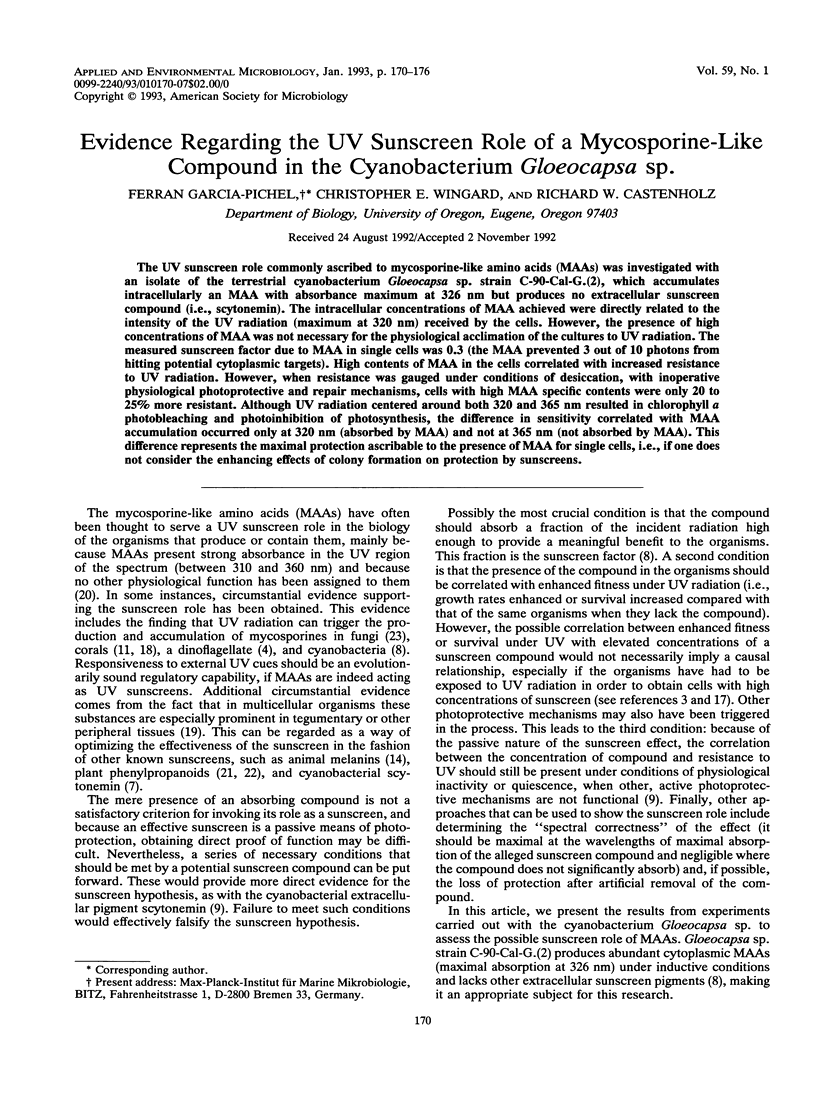
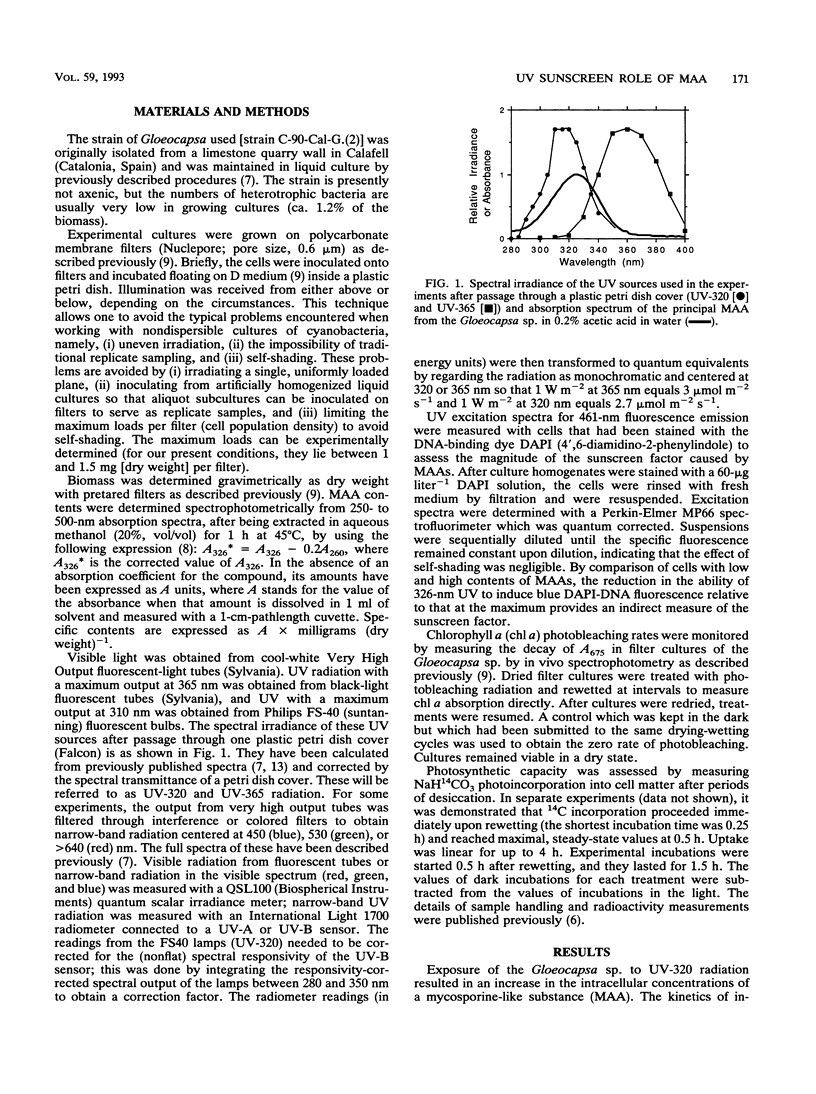
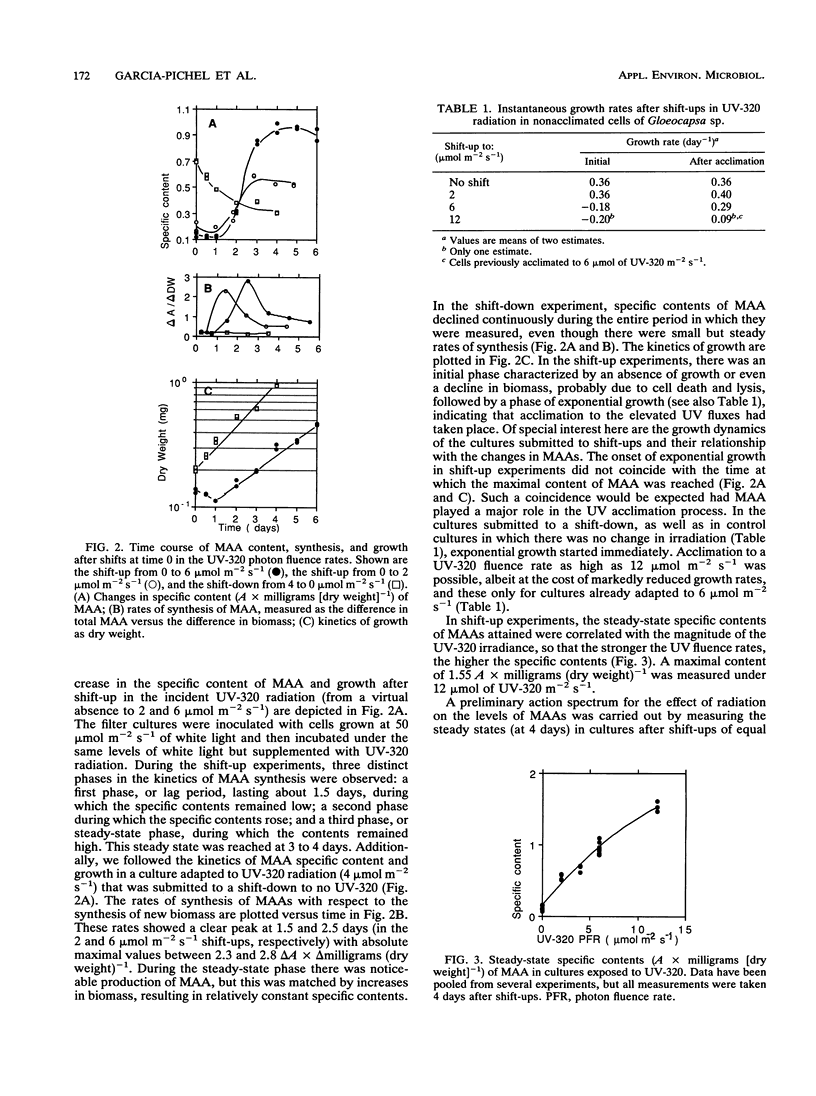
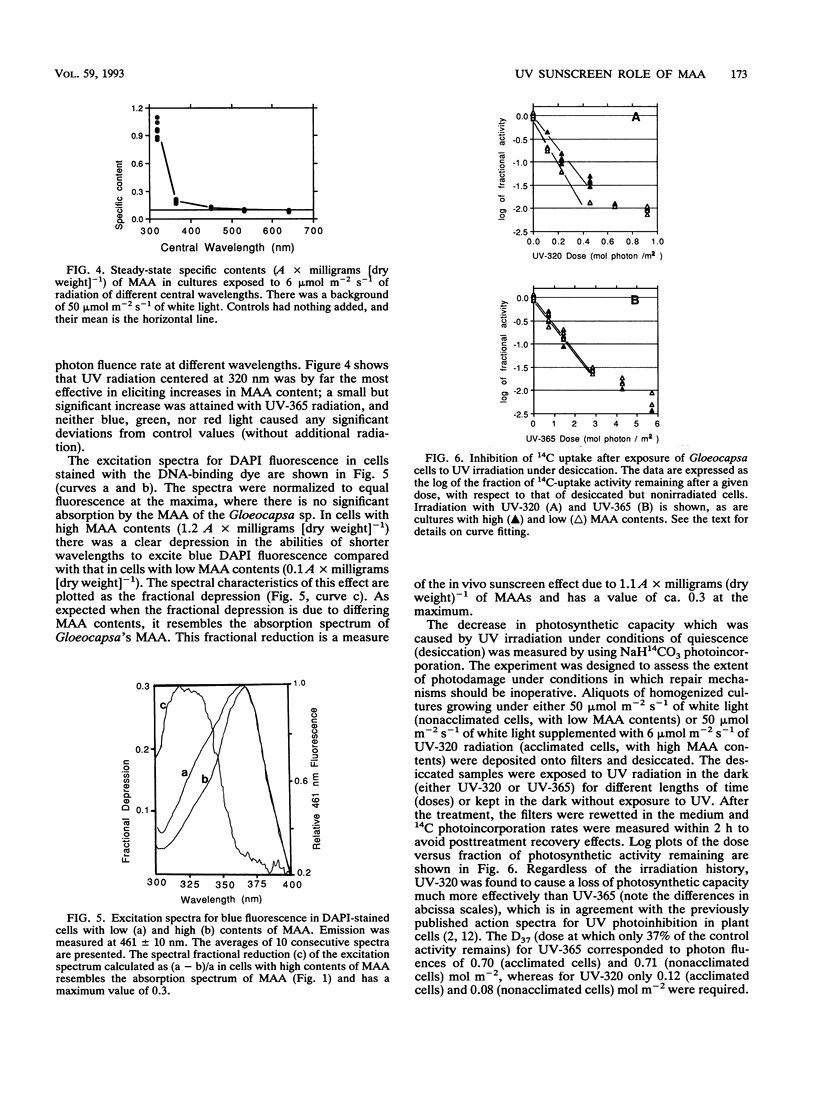

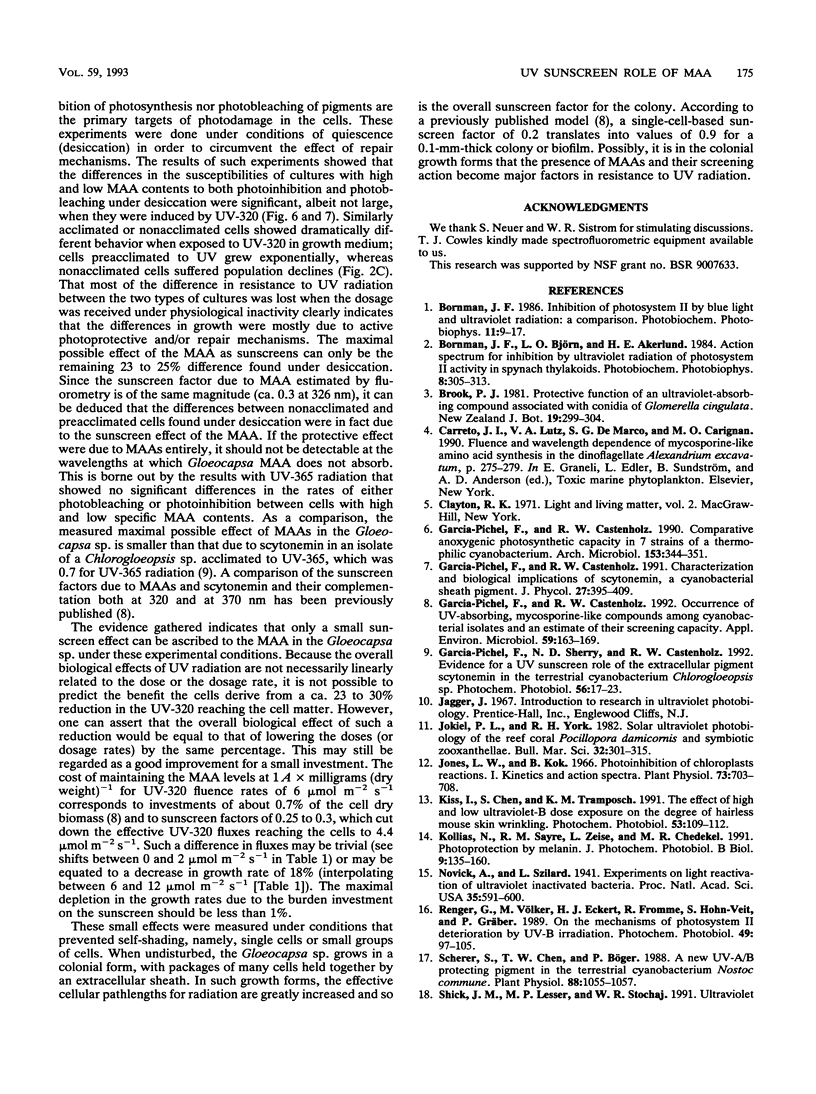
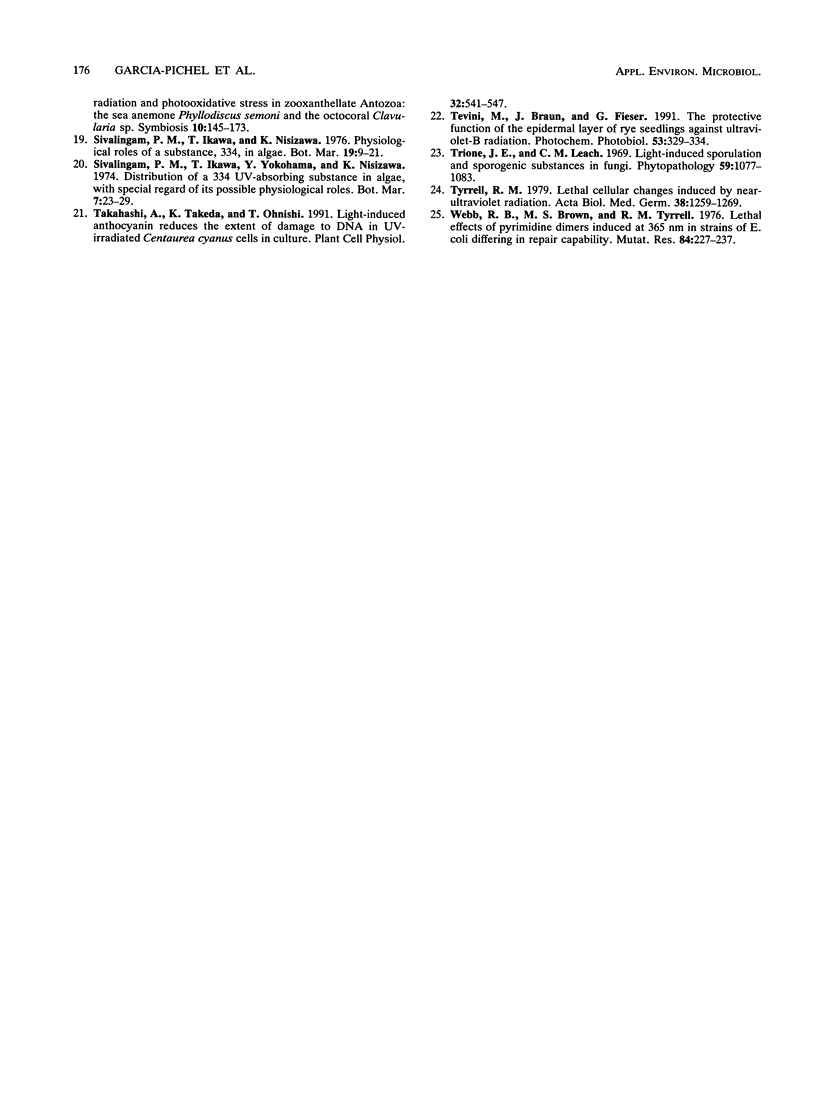
Selected References
These references are in PubMed. This may not be the complete list of references from this article.
- Garcia-Pichel F., Castenholz R. W. Occurrence of UV-Absorbing, Mycosporine-Like Compounds among Cyanobacterial Isolates and an Estimate of Their Screening Capacity. Appl Environ Microbiol. 1993 Jan;59(1):163–169. doi: 10.1128/aem.59.1.163-169.1993. [DOI] [PMC free article] [PubMed] [Google Scholar]
- Garcia-Pichel F., Sherry N. D., Castenholz R. W. Evidence for an ultraviolet sunscreen role of the extracellular pigment scytonemin in the terrestrial cyanobacterium Chlorogloeopsis sp. Photochem Photobiol. 1992 Jul;56(1):17–23. doi: 10.1111/j.1751-1097.1992.tb09596.x. [DOI] [PubMed] [Google Scholar]
- Kiss I., Chen S., Tramposch K. M. The effect of high and low ultraviolet-B dose exposure on the degree of hairless mouse skin wrinkling. Photochem Photobiol. 1991 Jan;53(1):109–112. doi: 10.1111/j.1751-1097.1991.tb08474.x. [DOI] [PubMed] [Google Scholar]
- Kollias N., Sayre R. M., Zeise L., Chedekel M. R. Photoprotection by melanin. J Photochem Photobiol B. 1991 May;9(2):135–160. doi: 10.1016/1011-1344(91)80147-a. [DOI] [PubMed] [Google Scholar]
- NOVICK A., SZILARD L. Experiments on light-reactivation of ultra-violet inactivated bacteria. Proc Natl Acad Sci U S A. 1949 Oct;35(10):591–600. doi: 10.1073/pnas.35.10.591. [DOI] [PMC free article] [PubMed] [Google Scholar]
- Scherer S., Chen T. W., Böger P. A New UV-A/B Protecting Pigment in the Terrestrial Cyanobacterium Nostoc commune. Plant Physiol. 1988 Dec;88(4):1055–1057. doi: 10.1104/pp.88.4.1055. [DOI] [PMC free article] [PubMed] [Google Scholar]
- Trione E. J., Leach C. M. Light-induced sporulation and sporogenic substances in fungi. Phytopathology. 1969 Aug;59(8):1077–1083. [PubMed] [Google Scholar]
- Tyrrell R. M. Lethal cellular changes induced by near ultraviolet radiation. Acta Biol Med Ger. 1979;38(9):1259–1269. [PubMed] [Google Scholar]
- Webb R. B., Turner M. A. Mutation induction by monochromatic 254-nm and 365-nm radiation in strains of Escherichia coli that differ in repair capability. Mutat Res. 1981 Dec;84(2):227–237. doi: 10.1016/0027-5107(81)90192-5. [DOI] [PubMed] [Google Scholar]


